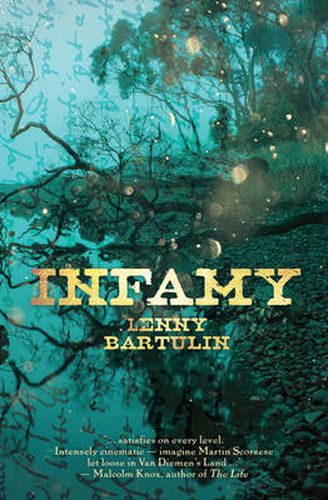Infamy by Lenny Bartulin
Lenny Bartulin’s exuberant new novel takes place in 1830, in what was then an isolated corner of the British Empire – Van Diemen’s Land. The nascent colony exists in a state of near anarchy, filled as it is with convicts, settlers, opportunists and a still unbowed native population, jostling for power under a thin veneer of official governance. The plot is a rich tapestry of highly believable characters and gripping conflicts, at the centre of which is a crazed half-English mulatto called Brown George Coyne, hiding out in the bush with an unruly mob of disgruntled brigands and a pilfered fortune, plotting a coup against the British regime in Hobart Town. Coyne is a wonderfully theatrical creation, reminiscent of Joseph Conrad’s Mr Kurtz in Heart of Darkness, and one who embodies the violence and megalomania of the imperial project. His opposite in the novel is William Burr, a high-minded, seasoned pirate-catcher sent for from Belize by the po-faced Lieutenant Governor George Arthur to capture Coyne.
The action takes place over three days, which, along with a bewilderingly long list of characters, lends the novel a dizzyingly frenetic pace. Bartulin exhibits a convincing command of the contemporary lexicon which runs through the prose as well as the dialogue, creating an immersive atmosphere of historical authenticity. The highly assured description evokes a sense of the disconcerting novelty experienced by natives and settlers alike.
Although some of the threads feel truncated, overall Bartulin juggles his large cast and complex plot with aplomb, and I particularly enjoyed an unconventional ending that refused to cave to the clichés of ‘Western’ narratives. The novel is a panoramic vision of the madness and mayhem of Australia’s early colonial experience and a highly enjoyable raucous adventure.



